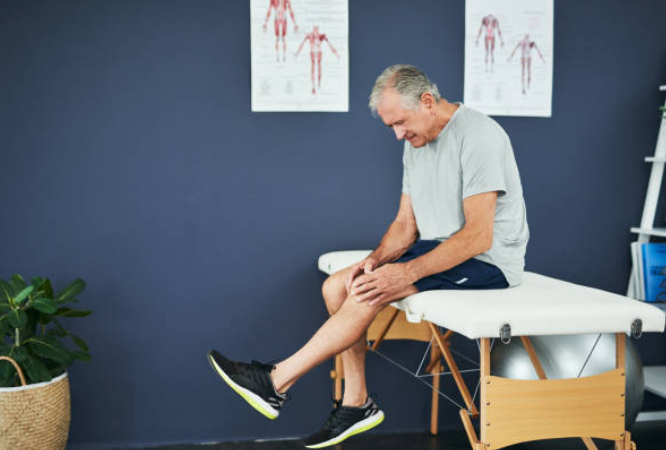What is osteoarthritis?
Osteoarthritis is a chronic condition that is characterized by cartilage breakdown in the joint. We need our cartilage because it protects the end of our bones to ease the friction when we move our body. Osteoarthritis is the most common type of arthritis. It can affect any joint but it commonly affects the hip and the knee joint. In an osteoarthritic joint, the cartilage is damaged which results in decrease movement at the joint.
How do I know if I have osteoarthritis?
Osteoarthritis is diagnosed using an X-Ray and a physical examination by a health care professional. You will need to have both arthritic radiological findings and clinical signs and symptoms to be diagnosed with osteoarthritis. The risk of developing osteoarthritis increases with obesity and age. There is also a genetic component to this chronic condition. The common signs and symptoms involved:
- Generalized knee pain
- Decrease ability to participate in everyday activities
- Decrease range of motion at the joint
- Swelling at the joint
- Stiffness especially in the morning.
3 important osteoarthritis facts
1. Osteoarthritis is common and affects 1 in 11 Australians: Osteoarthritis is like wrinkles, it is very common as you get older. This condition can be effectively managed through a strong support system between a General Practitioner and a physiotherapist. There many treatment options available no matter what stage of osteoarthritis you are in. Surgery is not the first line of treatment for osteoarthritis. Many people respond well with proper education, dietary changes and physiotherapy-based exercise program.
2. You are more than your scans: You just had your X-ray and you’re waiting for the results in the Doctors room. Your doctor mentioned that the scans show severe bone on bone action on the knee. You become anxious and convinced to avoid physical activity with the fear of worsening the arthritis. This is a common experience for many people with osteoarthritis. However, you will be glad to know that the extend of abnormality shown in the scan does not relate to your feeling of pain or discomfort. The pain experience is complex and is based on biological, psychological and social factors.
3. Physiotherapy can improve osteoarthritis function and pain: Osteoarthritis can be painful and make you want to limited your movement. It is often believed that movement could worsen the condition. Many people are unaware that this is simply outdated advice! When we don’t move, our muscles get weaker which will lead to more painful movements. What we need is a progressive resistance strength program to build our muscles! Strong muscles provide protection against further cartilage loss and narrowing of the joint space.
At Myphysio, our physiotherapist are experts in managing both knee and hip osteoarthritis. We will be able provided you with the appropriate program to start getting your muscles stronger to help you get back into enjoying your hobbies. Our physiotherapist will educate you on the condition and teach you self-management strategies so you are confident in handling your chronic condition. Contact us today to book an appointment with one of our friendly physiotherapists.
References:
1. Australian Institute of Health and Welfare. Osteoarthritis, What is Osteoarthritis? – Australian Institute of Health and Welfare.
2. Royal Australian College of General Practitioners. Guideline for Management of Hip and Knee Osteoarthritis. https://www.racgp.org.au/download/Documents/Guidelines/Musculoskeletal/guideli ne-for-the-management-of-knee-and-hip-oa-2nd-edition.pdf. Published 2018.
3. Amin S, Baker K, Niu J, et al. Quadriceps strength and the risk of cartilage loss and symptom progression in knee osteoarthritis. Arthritis Rheum. 2009;60(1):189-198

